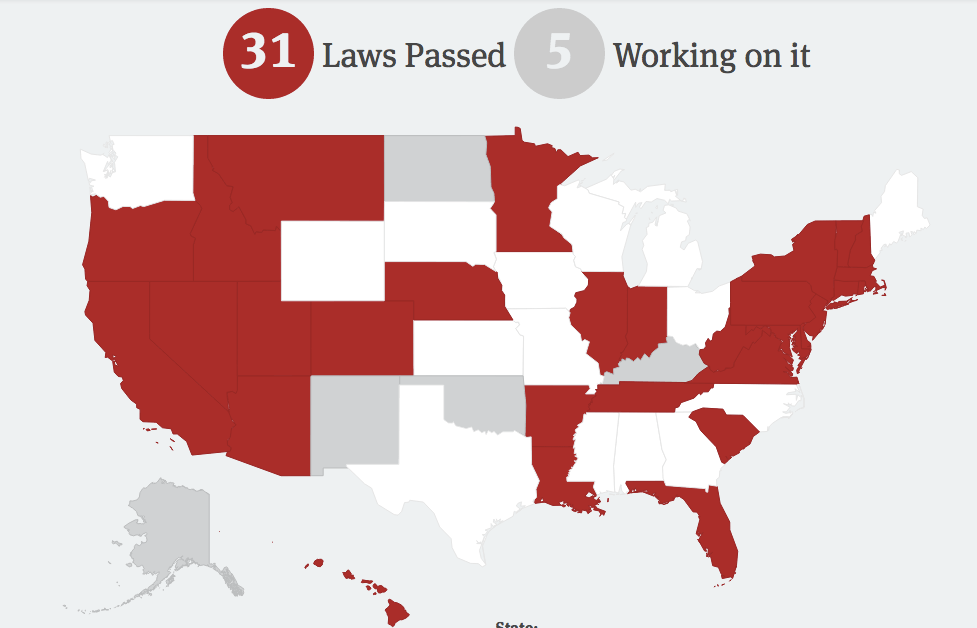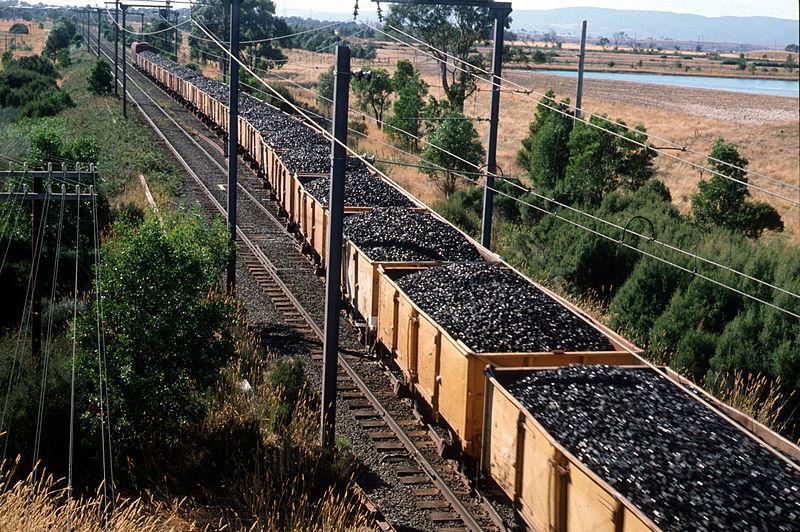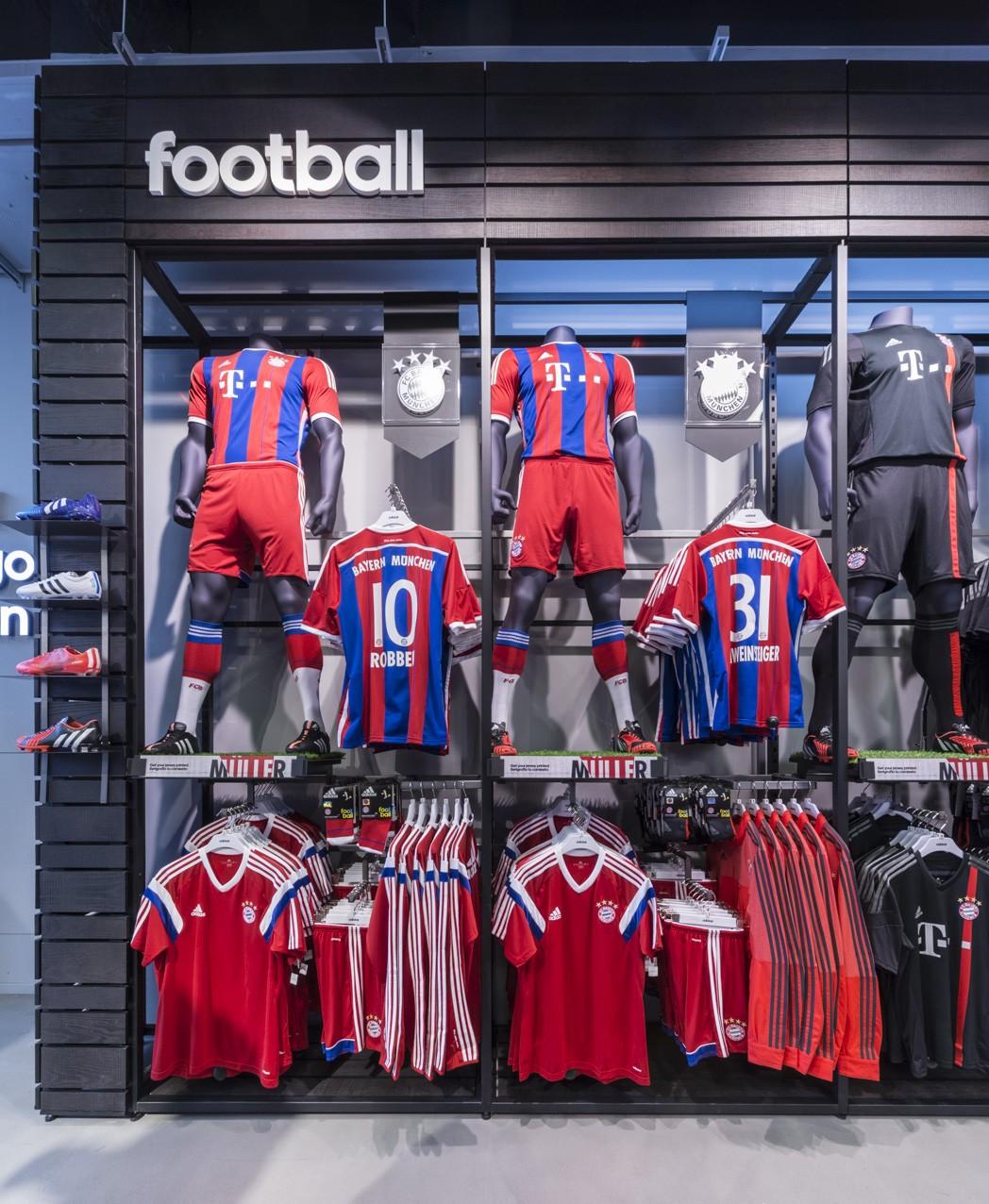Will Bad Companies Fail? Want To Bet?


Activists cheered when Peabody Energy, the world's largest coal company, declared bankruptcy last week. These activists have been lobbying endowments and pension funds to shift their holdings away from fossil fuel companies. They want the funds to take a stand against big polluters and dirty deals. They might not be aware that when Peabody went down, at least one social venture fund also made a profit.
Over the last two years, energy stocks like Peabody have taken a beating. The price of a share of Exxon declined 17 percent while the S&P 500 index rose 10 percent, for example. So, if you sold stock in an energy company in 2014 and bought something else, you probably did well by doing good.
Sustainvest Asset Management takes this strategy a step further. Its owner, Dale Wannen (who is also a contributor to TriplePundit), has opened a hedge fund that does two things. Like many other funds, it invests in companies that rank highly on measures of environmental, social and governance (ESG) policies. But it also bets against companies with low ESG scores.
"A lot of socially responsible investors are fairly savvy," Wannen says. "So, if you're divesting from bad companies and you believe they're going to fail, why not go further? Why not short them?"
Wannen and other hedge fund managers "short" stocks by selling shares they have borrowed. They believe that the price of the shares will fall. When they bet correctly, they buy the shares back at the lower price, return them to the owner, and pocket the difference. This is the opposite of normal investing (known in the trade as "going long"), which centers around buying a stock because you believe it will increase in value.
Wannen's Sustainavest Fund invests 80 percent long and 20 percent short. He looks at a company's economic prospects based on traditional measures, such the ratio of stock price to earnings. Then he looks at how it performs on social audits from CDP (formerly the Carbon Disclosure Project), ISS (Institutional Shareholder Services) and other agencies. Companies that do well in both sorts are contenders for the long list. Those that do poorly on both lists might get shorted.
To make his final choices, Wannen reads widely, thinks things over and connects the dots. A good social responsibility report is a must, he says, and that's one reason why the fund goes long on Estee Lauder, Starbucks and Microsoft.
The shorting decisions can be more complicated. It's easy to understand why Wannen bet against Peabody Energy (even though the company also has a slick social responsibility report). But why is he shorting Conn's, a Texas department store chain?
"I asked myself: Who will be negatively affected if oil prices stay below $40 a barrel for the next few years? Conn's came up numerous times," Wannen says. "It also looked like they might have problems meeting their short-term earnings targets. And they don't even have a responsibility report. It seemed like they aren't thinking that way. So I shorted them at the beginning of March, and it was a good call. They had a horrible month."
Wannen tested the strategy privately, using his own money for 20 months before opening the fund to investors in January. His returns in 2016 are beating the S&P index, but he says that returns alone are not the main reason for a hedge fund.
Hedge funds are not for small fry. Wannen asks for a minimum investment of $250,000. "A good hedging strategy reduces the volatility in a larger investment portfolio," Wannen says. "It means that when the market goes down, you don't lose as much." Measures of risk-adjusted return, such as the Sharpe and Sortino ratios, are a better indicator of a hedge fund's quality than is unadjusted return, he says. In 2016, Wannen says, his fund's Sharpe ratio is twice as high as the S&P's.
"I'm passionate about socially responsible investing," he says. "This is all I've done for 12 years. So one reason I opened this fund is to push people's buttons. Do you really believe that companies like Monsanto cannot succeed? All right then, let's get into it! Let's short 'em!"
Image credit: Flickr/Paul Sableman
Mars To Distinguish 'Everyday' and 'Occasional' Foods


There have been plenty of major food fights over the past several years, as more companies are called out for describing their foods with words such as “natural.” The movement toward more transparency in food labeling has been a rocky one: With California’s attempt to mandate GMO-labeling ending in expensive failure, only for companies are now moving in that direction as a result of Vermont’s recent passage of GMO-labeling requirements.
As consumers demand more transparency in how food is made and become more aware of the social and economic impacts of our global food supply, we see companies scrambling to make sure more of their products are fair trade, organic or free range.
Now, Mars is raising the bar higher with a bold, yet potentially slippery, new approach toward food labeling. Last week, the privately-owned food giant announced what it calls a Health and Wellbeing Ambition plan that seeks to promote more healthful food choices and encourage people to share such meals with others. Meanwhile, over the next five years, the company insists it will reduce the amount of sugar and sodium in many of its foods, while incorporating more healthful ingredients such as whole grains and legumes. But what stands out the most is the company’s drive to label “everyday” versus “occasional” foods.
All eyes will be on how Mars decides which foods are fine for daily consumption versus the occasional treat. Clearly those iconic Snickers bars will go on the indulgent “occasional list.” But to the company's credit, if it follows through, labeling will be more than a fancy way to say good versus bad. Such labeling will say how often it is recommended that such meals or snacks are eaten, and how long it takes the body to “restore balance” after they are consumed.
For many products, the company says it will recommend only eating them once a week — surely new territory for any food company, as they have bombarded consumers for years with marketing messages that tie their products to a vivacious, active lifestyle. This move by Mars is analogous to when Patagonia turned heads within the apparel industry by telling consumers “don't buy this jacket,” a completely counterintuitive tactic during the busy holiday shopping season.
What will also be interesting to watch is how far Mars takes another one of these new directives. While boosting the nutritional profile of its foods, the company also states that it will encourage people to share 1 billion more healthful meals at dinner tables worldwide. How that number will be counted and validated is one big open question. But Mars could be onto something: The evidence suggests that worldwide, families are eating together less now than in the past. Whether the decline is gradual, as Gallup suggests, or dramatic, as one privately-funded survey posited, such a trend is evident.
If Mars can have a role both in the improvement of public health and the communal experience in dining, such a triumph should be celebrated five years from now when these company initiatives become fully implemented.
Image credit: Mars Inc.
This Startup Makes Living in a Tiny Room in NYC Look Dope


WeLive is creating a new way of living. It’s built upon community, flexibility and a fundamental belief that we’re only as good as the people we surround ourselves with. As we all know, the New York City real estate market is one of the most expensive in the world. With many millennials being priced out of the market, they’re desperately in search of new, innovative ideas and concepts that allow them to not only live in the way they want to live, but also look super cool while doing it.
That’s where WeLive comes in. From mailrooms and laundry rooms that double as bars and event spaces to roof decks and hot tubs, WeLive challenges traditional apartment living through physical spaces that foster meaningful relationships. The tiny rooms and communal spaces are impeccably designed to foster a sense community, while removing some of the barriers that come with high-end living.
Best known for its communal workspaces, WeLive is a concept developed by WeWork, a company that turned its trendy co-working facilities into a hipster mecca. “When we started with WeWork in 2010, we wanted to build more than beautiful, shared office spaces,” the company says on its website.
“We wanted to build a community. A place you join as an individual, 'me,' but where you become part of a greater 'we.' A place where we’re redefining success measured by personal fulfillment, not just the bottom line. Community is our catalyst.”
WeWork, co-founded by CEO Adam Neumann and his partner, Miguel McKelvey, has a simple business model. The company rents office space from landlords wholesale, breaks them into smaller units, and subleases the units at a profit. The duo behind the company, which now has over 77 locations and more than 50,000 members, say its ultimate potential is much bigger -- and investors agree.
WeWork’s backers valued the company at $1.5 billion back in 2014, and it’s now worth over $16 billion -- making it the sixth most valuable private company, tied with Snapchat, Fast Company reports.
WeWork’s success can be greatly attributed to the power of the sharing economy. Just like choosing Uber or Lyft rather than buying a car, these new “co-living” residences are an alternative for those who value access over ownership. And these units offer access to a sexy set of perks and amenities that are unheard of in NYC for the price.
The company opened the first of its WeLive residences earlier this month at 110 Wall St. in New York City’s Financial District. Rent starts at $1,375 a month for a two-person shared studio, or $2,000 for an individual studio. Although the cost per square foot may be higher than other buildings in the neighborhood, the tiny size of the bedrooms actually makes the monthly rent lower than your average Wall Street pad.
"We’re not just going to give them the best price, which we will," CEO Adam Neumann told Fast Company. "And we’re not going to just give them flexibility, which we will. But we’re going to give them a social layer of community that has never existed before."
Although personal space is limited (the average bedroom is 450 square feet), all spaces are fully furnished and the building has a gorgeous view of the East River. The units are fitted with Murphy beds that fold into the wall to save space, and shelves are plentiful to house all personal belongings.
However, the idea is that WeLive renters won’t spend much time in their small rooms but will congregate in the communal spaces. After all, that’s what they’re really paying for. The building features a big kitchen equipped with dishes, utensils and a refrigerator stocked with all of the beer and San Pellegrino you can drink.
The building has a doorman, a laundry room with a pool table and a workout studio that can also host parties or movie nights. The $125 monthly amenities fee also includes a cleaning service and unlimited yoga classes. There are also plans to put a trendy restaurant in the lobby.
WeLive eliminates the headaches that come with finding an apartment in NYC. They don’t require a broker’s fee or proof that you make 40 times the monthly rent, a typical requirement for renting in the city. The setup also gives the option of convenient month-to-month flexibility which is perfect for those moving to the city or looking for a short-term stay. There is a full-time community concierge and a mobile app which lists ongoing events and opportunities.
Launching the company’s first co-living experiment in NYC was a bold move, but it's one that will surely pay off -- especially considering the city’s cut-throat real estate market. But Neumann and McKelvey don't plan to stop there. WeWork plans to open 68 more communal residential buildings by 2018. A building in the Washington, D.C. area is now in beta phase.
And this is just the first step. WeWork has set some ambitious goals and is already thinking of creating entire neighborhoods and even cities. "It’s a when, not an if," Neumann said of WeCities. Perhaps the company might even be able to leverage the power of aspirational, co-minded millennials to power WeWorld.
Image credits: WeLive
Benefit Corporation Law Should Be Uniform in the United States


By Rebecca Hamburg
Benefit corporations, although still new, are a rising form of organizations throughout the United States that fall under the “fourth sector." In the United States, a benefit corporation is defined as a for-profit entity that also focuses on social benefit, or “doing good.” Doing good can mean a variety of things: from following ethical societal guidelines, to workplace environmental standards, to paid maternal leave. The aim of a benefit corporation is to have a positive impact on society, employees, the general community and the environment.
April of 2010 marked the passing of the first benefit corporation legislation in the United States, in Maryland. Since then, 30 states and the District of Columbia have passed their own individual laws enacting benefit corporations.
Although progress is substantial, it can be improved; right now, each state has its own individual rules, requirements and guidelines for passing and enacting a benefit corporation. Benefit corporations would, in fact, be much more successful if they were streamlined – the United States should have a uniform set of regulations for all benefit corporations within this country.
Both new companies and existing companies can become benefit corporations by incorporating as a benefit corp anywhere state legislation has been passed, and/or by amending their existing government documents. Many – though not all – states thus far follow the guidelines to becoming a benefit corporation prepared by the law office of Drinker Biddle & Reath, LLP. Additionally, the B Lab – a separate entity that certifies companies as B Corporations (meeting certain ethical and environmental guidelines) has a template for becoming a benefit corporation as well. But these templates are neither streamlined nor mandatory; states do not necessarily have to follow these pre-set rules. It’d be much more productive if there was a federal law for becoming a benefit corporation that all states had to adhere to. This would allow for communication across state lines and easier ability for said companies to expand.
How many companies and organizations can you think of that have offices in other cities, other states? Does the company you work for have more than one office? If the answer is yes, then your company’s ability to become a benefit corporation just became much more difficult. The company would have to adhere to both the headquartered state's laws and the laws in all additional states as well. More red tape, more paperwork, greater difficulty becoming a benefit corporation.
This is why there should be uniform, federally-recognized laws and guidelines to becoming a benefit corporation – the same rules and regulations for each state. Not only would it improve the already existing system, but it also would act as an innovative platform for the entire “fourth sector” movement.
Image credit: B Lab, benefitcorp.net
Rebecca Hamburg is a graduate student at The George Washington University Trachtenberg School of Public Policy and Public Administration. She is earning a certificate in Nonprofit Management, graduating this spring. Within her degree, she is most interested in the innovative and new "fourth sector" organizations that are emerging; specifically, Benefit Corporations, B Corps, and L3C's (although she still does not fully understand what those are). She currently works at a Political Media Consulting firm in Washington DC, whose clients are frequently nonprofit organizations; she hopes/intends to apply her academic learning to the real world.
3 Ways You Can Help Combat the Climate Crisis


By Daphne Stanford
I don’t know if you noticed, but last year was the hottest year on record. Yes, you read that right: the hottest year in recorded history! In my opinion, that fact alone should be enough to indicate a climate crisis of epic proportions.
Although the situation can sometimes feel daunting and beyond repair, there are a few simple, concrete actions we can take to minimize the impact we have, as business people as well as individuals, on the environment. In the past, I’ve written about how businesses can tap into a few current trends in sustainability. Now I’d like to address how we, as individuals, can support and effect change in our homes, as well as our communities.
1. Contact your representatives about smart grid implementation
One of the most frustrating aspects of green technology is the fact that there is plenty of technology out there, but corporate interests are working hard to make sure we don’t have easy access to said technology. Why? Because they stand to lose business. Of course, they could stand to make a large potential profit if they shifted their energy toward supporting renewable technology like solar and geothermal power, but change can be slow-going when it comes to tradition.That’s where consumers, homeowners and citizens come into play. We have the smart-grid technology and capability to implement smart-grid technology on a massive scale, but we also need the political will to push legislation along. At the end of the day, power companies are out to make a profit, so consumer demand must be loud enough to justify the implementation of new technology in order to prevent loss of profits. The current and future state of smart-grid technology is such that it is projected to cost significantly less money to power a house using solar and geothermal technology than it does to power the same house with coal or natural gas.
However, are you familiar with the saying, where there’s a will, there’s a way? If so, you may realize that unless we have the political and societal will to change our current sources of power from fossil fuels to renewable sources of energy, it’s going to happen later rather than sooner.
Consider this a community call-to-action, then: Contact your legislators; call your neighbors; and reach out to friends and family. Share the benefits of smart-grid technology with them in a way that’s easy to understand, such as via some of the facts and talking points in this Consumer Benefits Fact Sheet, published by the SmartGrid Consumer Collaborative.
2. Retrofit your home
Although not all of us are home owners, even renters can find ways to help minimize their carbon footprints as much as possible. If you do own your home, consider investing in solar panels, if at all possible. Although the initial price of purchasing solar panels has not yet dropped down to budget-friendly levels, the solar tax rebate and reduction or elimination of monthly energy bills will eventually reimburse you three-fold.If the cost of investing in solar panels of your own is still too daunting, consider renting solar panels to keep your power bills down. For example, one company based on the East Coast is making solar power available to low- and middle-income households via an affordable leasing model that requires no down payment. In areas with extreme temperature highs and lows, this option could potentially save you a considerable amount on your monthly power bill.
3. Push for and utilize alternative forms of transportation
Advocating for change in our homes and communities is all well and good, but what about the carbon emissions from something we use every day: our cars? What if we found ways to reduce our personal share of transportation-related carbon dioxide by riding our bikes, carpooling, or taking public transportation? Of course, public transportation only becomes an effective way to combat excess car usage if it is widely utilized. One way to get more people to take public transportation is by encouraging your friends and family to do so, just as you might encourage your network and community members to invest in renewable energy sources like solar energy.One way to help ensure the increased availability of public transportation is to ask for it: call or write your local and state legislators and say you want them to invest in more and better forms of public transportation. In fact, in urban areas, transportation fumes are responsible for 25 to 70 percent of all air pollution. The more we can lobby for and support efforts to encourage the use of alternative transportation, other than the use of single-driver vehicles, the more progress we will potentially make toward reducing transportation-related carbon emissions, and the better our air quality will become.
Education is empowering, and it’s our responsibility to continue educating ourselves as citizens about green technology. The future will be here before we realize it, and it’s up to us to create a future that is clean, sustainable, and safe for our children and our children’s children.
Image credit: Flickr/Conal Gallagher
Daphne Stanford writes poetry & nonfiction, and she believes in the power of art, education, and community radio to change the world. Since 2012, she's been the host of “The Poetry Show!” Sundays at 5 p.m. on Radio Boise. Follow her on Twitter @daphne_stanford.
A force for good


Fujitsu’s head of responsible business, Juliet Silvester, explains how the company creates long-term value. Interview by Tom Idle
The Japanese ICT business Fujitsu is currently “the most responsible business” as deemed by Business in the Community’s (BITC) annual awards, with 2015 judges heaping praise on the company for the way in which sustainability is embedded into its core strategy and how it influences others to collaborate and create the conditions for long-term sustainable change.
With half of its UK budget holders being women, apprentices paid 50% higher than the national minimum wage, and data centres powered by clean energy, Fujitsu is on a mission to not only challenge industry norms, but to create technology that is a force for good.
With $2.1bn invested in R&D topioneer innovationthat responds to some of the world’s biggest challenges – like tackling pollution in cities and monitoring health problems to enable the elderly to live well for longer – the company is keen to prove that responsible business drives profit and success.
Tom Idle:What does it mean to be a responsible business in 2016?
Juliet Silvester:We talk about winning the right way. We are a business and we’re here to make a profit. But equally, we want to win in the right way, in a responsible manner. So, we want responsibility to be at the heart of everything we do.
How long has that been the case?
Well, the company was 80 years old last year, and a commitment to the environment and society has always been a part of that history.
We call it The Fujitsu Way – an ethos that considers how we contribute to the sustainable development of society and the planet, and how can we use IT to create a human-centric intelligent society, which remembers that people are at the heart of it.
Your initiatives range from tackling youth unemployment and dementia-friendly financial services, to creating jobs for SMEs and addressing the Ebola crisis. How do you assess what’s most important to you as a business?
We focus on the mega trends– where the world is going to be in 2050 with an ageing population, with the impact on healthcare, and when resources becomes scarcer. So, we invest in R&D to create technology to solve these challenges.
How do you embed those values? Is it about hiring people against those values to make sure you bring the right people on board?
It’s a mixture of things. It’s about having strong leadership. When our chairman in Tokyo speaks about being a responsible business, people listen. We make it clear that this is what we believe in, we are not just paying it lip service.
The millennial generation is definitely asking more questions about our CSR when applying for jobs with us.
You’re a private business, without shareholders breathing down your neck and scrutinising investments. That must help.
We are listed on the Tokyo Stock Exchange, but because we are a Japanese company, the pressures are different. We are able to take a longer-term view – to look into the future and work back from there to see what positive role we can play.
How do you know how well you’re doing?
We run an annual employee engagement survey, and we ask specific questions about our responsible business activity so we get scores from that.
As a member of BITC, we take part in the CR Index, which is the only UK benchmarking exercise you can do on CSR topics. We are now at a score of 99%, so we must be doing something right.
We also use the ISO 26000, which is not a standard, but guidance on responsible business. So, we match our activities against clauses in the guidance and get that assured by Natural Capital.
What sort of improvements have you made in recent years?
It has been about further embedding some of the things we were already doing. For example, our environmental targets were fairly short term, looking three years ahead. Now, our targets are 10 years out. Previously, we were interested in climate change. Now, our environmental management system is more comprehensive, looking at issues such as biodiversity.
We are also now looking at supply chain management – ensuring that our positive impact is replicated by suppliers too.
Being named Responsible Business of the Year must feel great. But are there real, tangible benefits?
From a brand perception point of view, it is hugely beneficial. We know our customers want to work with others that have similar values.
In terms of engaging staff, it has been hugely important. We want to attract talent and have a diverse workforce of people that feel they can be themselves here.
And it’s important for business growth, too.
Join the sustainable business debate of the year


Join in with this fascinating debate as a dynamic group of innovators share their ideas and challenge ‘business as usual’ approaches at the Social Responsibility and Sustainability Conference at The Crystal, London, on 12 May. This unique conference examines new approaches to ethical business. Leaders from business and civil society reveal bold ambitions and challenge the laggards, and we will learn hard truths about the scale of the challenges as well as unprecedented opportunities for real change.
Featured speakers include:
· Catherine Howarth, ShareAction's Chief Executive and one of the top advocates for tax justice, fair pay and corporate responsibility;
· Dr. Raj Thamatheram, CEO of Preventable Surprises; who works with companies and investors to put people and planet on par with profits;
· Joan Walley, Chair, Aldersgate Group, former MP and influential environment campaigner;
· CSR leader Paul Monaghan, Founder, Up The Ethics and Director of the Fair Tax Mark.
· The final keynote speaker will be Roz Savage, MBE, World record breaking adventure rower and environmental campaigner who rowed solo across three oceans.
The panel discussions will address new approaches to ethical and responsible business. Social Responsibility Modernisers will share their experiences and encourage interactive input on transforming corporate culture.
The conference will be held at ‘the most sustainable event space in the World’, The Crystal, in Royal Victoria Docks, London. Tickets cost £175 and include sustainably sourced refreshments and buffet lunch and admission to the Siemens ‘Future of Cities’ exhibition. Concessional tickets available on request.
Norway’s Sovereign Wealth Fund Divests from Coal


This Nordic country’s oil reserves are only the 21st largest on Earth, but while oil giants Venezuela and Nigeria frittered away their hydrocarbon wealth, Norway has invested its relatively meager oil revenues into its people. Established over 25 years ago, Norway’s Government Pension Fund is the largest sovereign wealth fund in the world, and is worth approximately $825 billion. According to the Norwegian government, the purpose of the fund is to pay for the country’s welfare programs for current and future generations.
And last week, the fund’s managers announced that divestment from coal companies is underway.
Norway’s government began considering a divestment strategy from coal in 2014. Until then, the country’s finance ministry insisted that there was no need for “negative filtering” in order to exclude conventional energy companies from the fund.
The fund had enjoyed a period of rapid growth, due in part to oil and coal revenues, but also because of the ongoing devaluation of the country’s currency. But as oil prices declined, and as the calls for divestment from fossil fuels became louder, the ministry appointed a task force of economists to reevaluate the fund’s investment strategy. A government committee then recommended that any change to how the fund was managed should be based on science.
So last summer, Norway’s parliament agreed to sell off investments in companies that generated more than 30 percent of their revenues from coal. Meanwhile, the fund has announced that about $6 billion of its assets will be diverted into “environmental investments.”
As many as 52 companies have been banned from the fund, the Guardian reports. They include China Coal Energy; American coal giants AES and Peabody Energy (which declared bankruptcy last Wednesday); and the Indian companies Reliance Power and Tata Power.
While environmental groups in general welcomed this announcement, Greenpeace Norway has been more guarded with its praise. Last summer the NGO released a “to-do” list that revealed 122 companies, which according to the Norwegian Parliament’s standards, should be eliminated from the fund. Many companies on that list include some of the largest electric power utilities in the U.S. Greenpeace suggested the amount of securities the fund should liquidate totals about $8.2 billion, which is still less than 1 percent of the fund’s total assets.
Activist investor organizations, including Ceres, have long argued that pension funds should divest from fossil fuels for a wide range of reasons, from the fracking industry’s threat to water quality to the passage of more regulations that aim to keep climate change risks in check. A major study co-written by London School of Economics professors, and backed up by the Harvard Business Review, maintains that trillions of assets worldwide are imperiled due to short- and long-term climate change risks. California’s public employee pension fund (CALPERS), one of the world’s largest pension funds, was instructed to divest from coal companies by July 2017. Other states, including Vermont, are considering similar divestment strategies.
Coal, of course, is easy pickings for pension funds. Clean energy technologies, while rapidly becoming more scaleable and cheaper, still have a long path ahead. The natural gas boom in the U.S. has allowed utilities to shift away from coal-burning to natural gas-fired power plants. And while environmental groups insist pension funds are still highly exposed due to investments in oil and gas companies, the reality is that even if electric vehicles significantly advance in the next decade, much of the world will still require oil for transportation needs. But as a John D. Rockefeller descendant explained, the nexus of climate change and emerging technologies means cashing in those fossil fuel assets should be begin sooner rather than later.
Image credit: Wiki Commons (CSIRO)
Sustainability is About Saving Sport, Says Adidas


Sporting apparel companies, including Adidas, have been largely proactive on the sustainability front over the past several years. Once a villain due to exposés over human rights violations in its supply chain, Nike has become a leader in revamping its supply chain and developing more sustainable fibers for its shoes and apparel. Puma has also been a leader in manufacturing items out of recycled materials while integrating environmental metrics into its financial reporting.
These companies really have no choice: As athletic apparel has surged in popularity -- seen as no longer solely exercise wear, but in fact everyday fashion -- these companies must be stewards of the environment if they are going to have a steady and scaleable supply of materials such as cotton.
To that end, Adidas announced that it is retooling its sustainability strategy in order to ensure that sporting activities will long endure. Revealed in its most recent sustainability report with its catchphrase “Sport Needs a Space,” Adidas says it has its eyes on goals for 2020, including targets related to water, materials, energy, workers and health.
Such metrics, says Adidas, are crucial “to ensure that sport continues to be an infinite source of happiness,” and inspire generations to value the spaces in which they can enjoy athletics and sport. According to an Adidas spokesperson, the company adapted this approach after exhaustive consumer research undertaken to gauge how important sport is for values, well-being and all of society. The company said 93 percent of the people interviewed for this study said they would “hate or dislike” a world that lacked places in which they could participate in any kind of athletic activities. Therefore, at a high level, the company’s strategy has three pillars: where sport is made (as in factories), sold (as in trade show and retail locations), and played (both manmade and natural settings).
Hence, on water, Adidas has set some ambitious goals for the next five years. The company will work with its “strategic suppliers” to reduce their water consumption by 20 percent; apparel suppliers must strive to reduce their water use by half; and within Adidas’ own sites, a 35 percent water reduction per employee is the target. Adidas has also promised that it will develop clean water access programs in some communities in which it operates, but those details, as of now, are vague.
Adidas is taking a similar approach when it comes to waste. Suppliers will have to reduce their waste by 20 percent; waste diversion efforts within Adidas’ operations are set to increase by 50 percent; and the company also seeks to reduce paper consumption by 75 percent per employee.
Similar metrics are on the drawing board for energy consumption, and the company also says it will attempt to improve working conditions throughout its supply chain, improve health for its employees and attempt to engage employees more effectively. Whether these last three goals -- empowering people, boosting health and inspiring action — are going to be evident in the future will be a matter of opinion. Some employee-engagement actions, the company claims, are already underway in Adidas locations such as its headquarters in Germany and its large offices in Portland, Oregon, and suburban Boston.
These are big goals indeed, and it will be up to us in five years to see if they morph into measurable and visible results. But based on its recent success with the incorporation of “better cotton” into more of its products, Adidas’ overall track record on responsible and sustainable business is not one to sniff at.
Image credit: Adidas
Social Good Fashion Turns to Biomimicry and Tech


What if your clothes mimicked nature? What if wearing a jacket gave you an internal compass like a migrating bird? What if a dress shed leaves like a tree?
A collection of fashionable garments, designed for social good by the students and alumni at the Parsons' Design and Technology Program, were exhibited at SXSW and drew significant attention. It's easy to see how social good fashion could be incorporated into, say, the marketing of an eco-friendly car such as the Tesla Model 3. (Audi did something similar with electronic, 3-D plastic garments last year.)
Here are five of the garments that were exhibited. Birce Özkan contributed to and curated the Design and Technology collection.
1. "Fall" by Birce Özkan
“ … Fashion can be kinetic, dynamic and almost living expression of our unique experience with nature. I strongly believe that Fall can influence the fashion world to become more dynamic and to increase the way clothes can react to the world around them," Özkan said. "I want clothing to have more responsiveness to the environment, so that instead of people always change their clothes, the clothes can sometimes change themselves.”
She began the garment design process by asking herself: “What if when the temperature got hot suddenly, our clothes would start to break apart in response? What if they had the skill to behave depending on the surrounding conditions? What if garments had the ability to sense the environment just like living organisms?”
Trees naturally shed leaves depending on the temperature and light. So, Özkan created an interactive garment that does the same. “In the fall, as the days shorten, and the temperature gets colder, the trees, without the light they need to sustain their chlorophyll, shed their leaves to keep their energy to survive for the winter ahead," Özkan said. "This process was the inspiration for creating my garment’s mechanism. To prepare for the fall of leaves, trees activate “scissor cells” that split to create a bumping layer that forces the leaves out of place, destabilizing them so that they fall.”
Özkan used the same process for her garment that trees use. Light activates small motors in the garment. The motors speed up when there is less light and make the “leaves” fall from the garment. The motors are attached to steel wires, and the wires connect to holes where leaves are attached with wax. When there is less light, the motor pulls the wire which breaks the wax adhesion and makes the leaves fall down. Özkan said she believes the piece will help people have a greater appreciation for the earth.
2. “Augmented Jacket” by Birce Özkan
Birds have a biological compass that tells them what direction to fly during migration. Their compass is guided by the earth’s magnetic field.
“This gives them a freedom that humans lack. Instead, humans become more dependent on their mobile phones to find their bearings. This dependency limits the awareness of their surroundings and denies them of some experiences,” Özkan said. So she created a jacket that imitates a birds’ internal compass. The jacket uses an electronic compass and embedded motors that make the feathers on the shoulders rise up when the wearer walks north.
3. “Bury” by Yuchen Zhang
Distraught by the amount of pollution in the environment, designer Yuchen Zhang created a hood that protects against pollution. The garment also provides commentary on the fact that we are rapidly destroying our naturally healthy environment. When we damage our surroundings, we turn them into a hostile environment that we then have to protect ourselves from.
“This garment protects the wearer by using reflective fabrics to increase their visibility in dim daylight which results from heavily polluted air," Zhang said. "Its unique facial covering allows the wearer to wear a filtration mask without compromising his or her style. More importantly, the garment illustrates an environment where we have almost depleted the protection of our atmosphere.”
4. "Vessel" by Elizabeth Tolson
The dress responds when a woman is touched inappropriately and changes colors depending on the wearers menstrual cycle. It turns a taboo topic into an interesting conversation that empowers women. Designer Zac Posen also created an LED dress last year in an effort to inspire and challenge girls to code. Posen's dress was part of Google's Made With Code initiative, and the electronics for the dress were coded by 30 girls in the program. Even today, girls can go online and learn to code the dress.
5. “Sensory” by Kendall Warson
"Sensory" is a garment designed to help people with visual impairments. It is often difficult for them to tell their clothes apart, so this garment has a braille label which allows the wearer to identify the clothing. Another user-friendly feature is the rubber band pocket which allows the wearer to easily slip in their hand (there are no cumbersome buttons or zippers) and the elastic nature of the pocket entrance prevents the contents from falling out. The cane that visually impaired people often use can slip inside the front edge of the jacket, allowing the wearer to blend in and not be immediately identified as having a visual impairment.
"Fashion is a form of self-expression,” Warson said. “To not understand color and patterns, people with visual impairments lose so much independence. I want them to get that back and to feel a sense of empowerment.”
Photo credits: 1) by Alex Tosti, 2) by Rebecca Enis, 3) by Rebecca Enis, 4) by Alex Tosti, and 5) from Elizabeth Tolson